Making homemade Kettle Chips is so easy! My recipe produces perfectly crisp and crunchy potato chips on the stove–NO deep fryer needed. Recipe includes a how-to video!
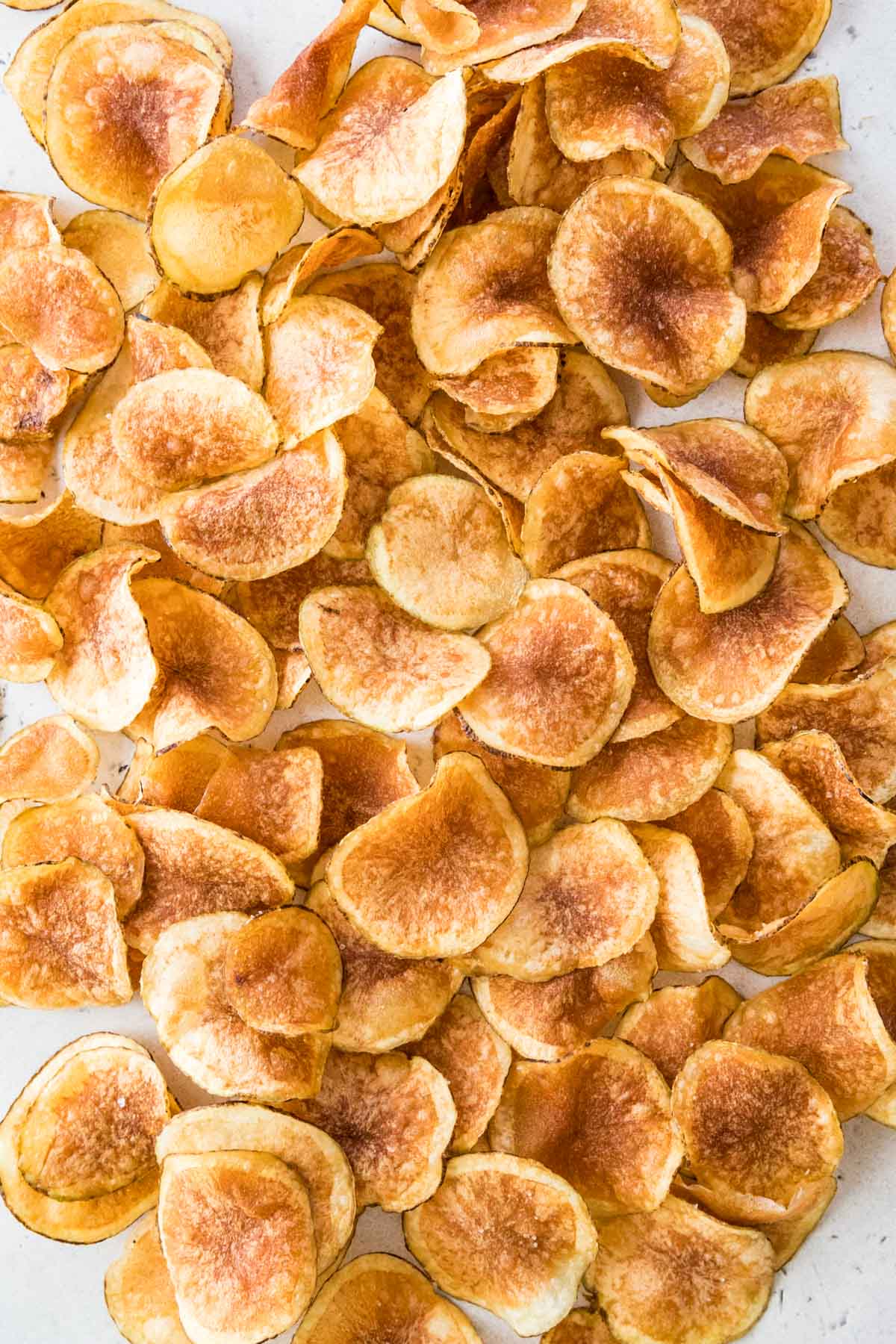
Fresh, Homemade Kettle Chips
You can make thin, crispy, and perfectly cooked kettle chips right in your own kitchen! Homemade chips are surprisingly simple to make, and honestly, there’s nothing like a freshly fried potato.
I love these because they’re so easy and customizable; I use salt as the only seasoning for today’s recipe, but you can always get creative and add something like freshly cracked black pepper or Old Bay!
If you’ve never fried anything before, this recipe is a great one to start with. You do need to be careful when adding your chips, but the whole process is very simple. Give this recipe a go, and soon you’ll be frying up a batch of fried pickles or mozzarella sticks like a pro!
What You Need
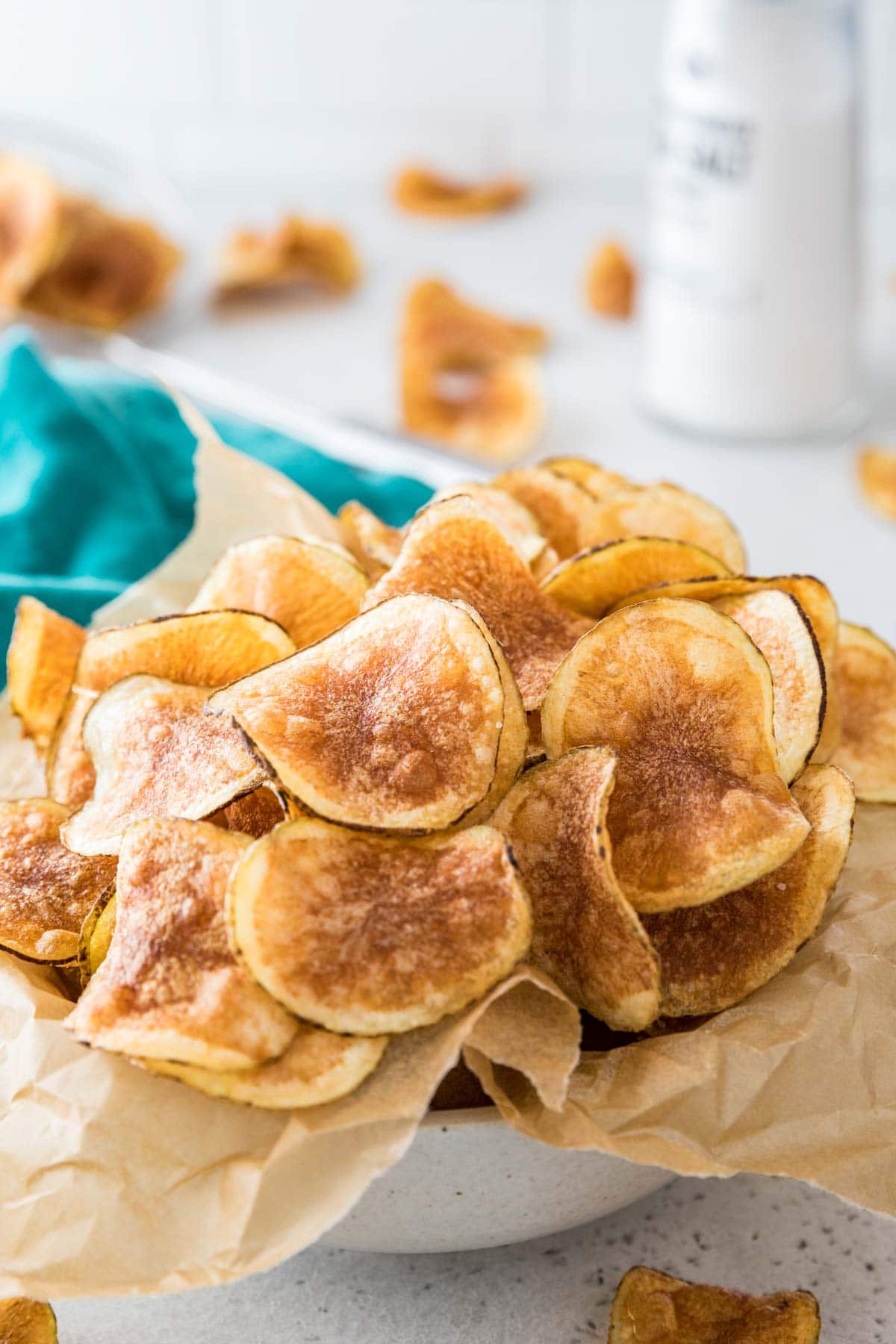
Homemade kettle chips require just three basic ingredients:
- Potatoes. Really, you can use any potato, even a sweet potato. However, russet potatoes are best for making potato chips. Gold potatoes would also work. For best results, use potatoes that have not yet sprouted.
- Oil. Use a good frying oil, like vegetable oil or peanut oil.
- Salt. I like to use sea salt for my chips, but you can use whatever you prefer. The great thing about this recipe is that you can control the salt level.
SAM’S TIP: An ice bath is essential for crispy chips, but you want to be very careful about introducing water when frying. As we all know, oil and water don’t mix, and combining the two can cause the *very hot* oil to bubble and create a dangerous situation. Because of this, it’s important you dry the potatoes extremely well (thoroughly blotting with a paper towel works) before lowering them into the oil.
Remember, this is just an overview of the ingredients I used and why. For the full recipe please scroll down to the bottom of the post!
How to Make Kettle Chips
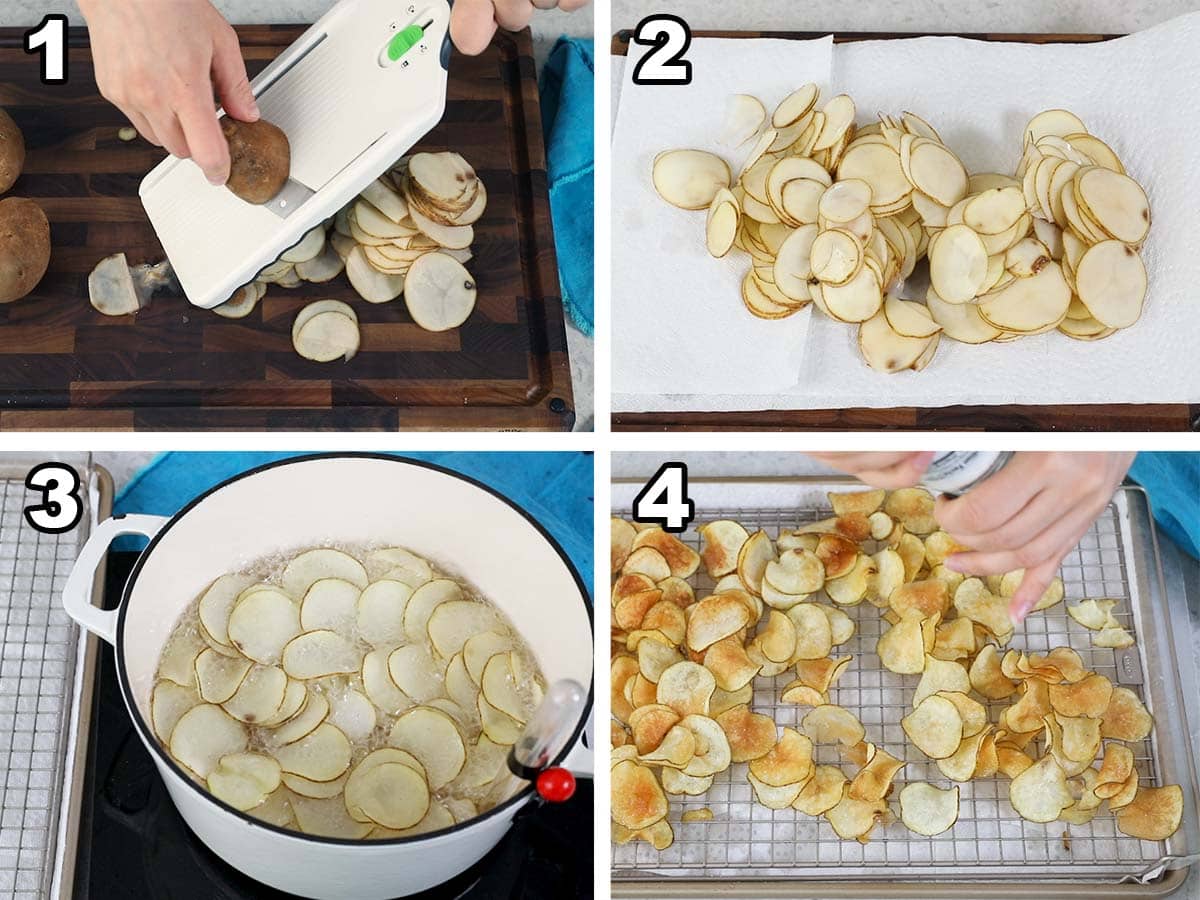
- Slice your potatoes as thin as possible, then place them in a bowl of ice water for 30 minutes.
- Drain and thoroughly dry your potatoes, then set up your frying station.
- Carefully lower the potatoes in to the oil and cook in small batches until stiffened, about 4-5 minutes.
- Use a spider to remove the chips from the oil and sprinkle them with sea salt while they’re still warm.
SAM’S TIP: You’ll know your chips are done when they are a light golden brown, begin curling around the edges, appear stiff, and “click” together when stirred.
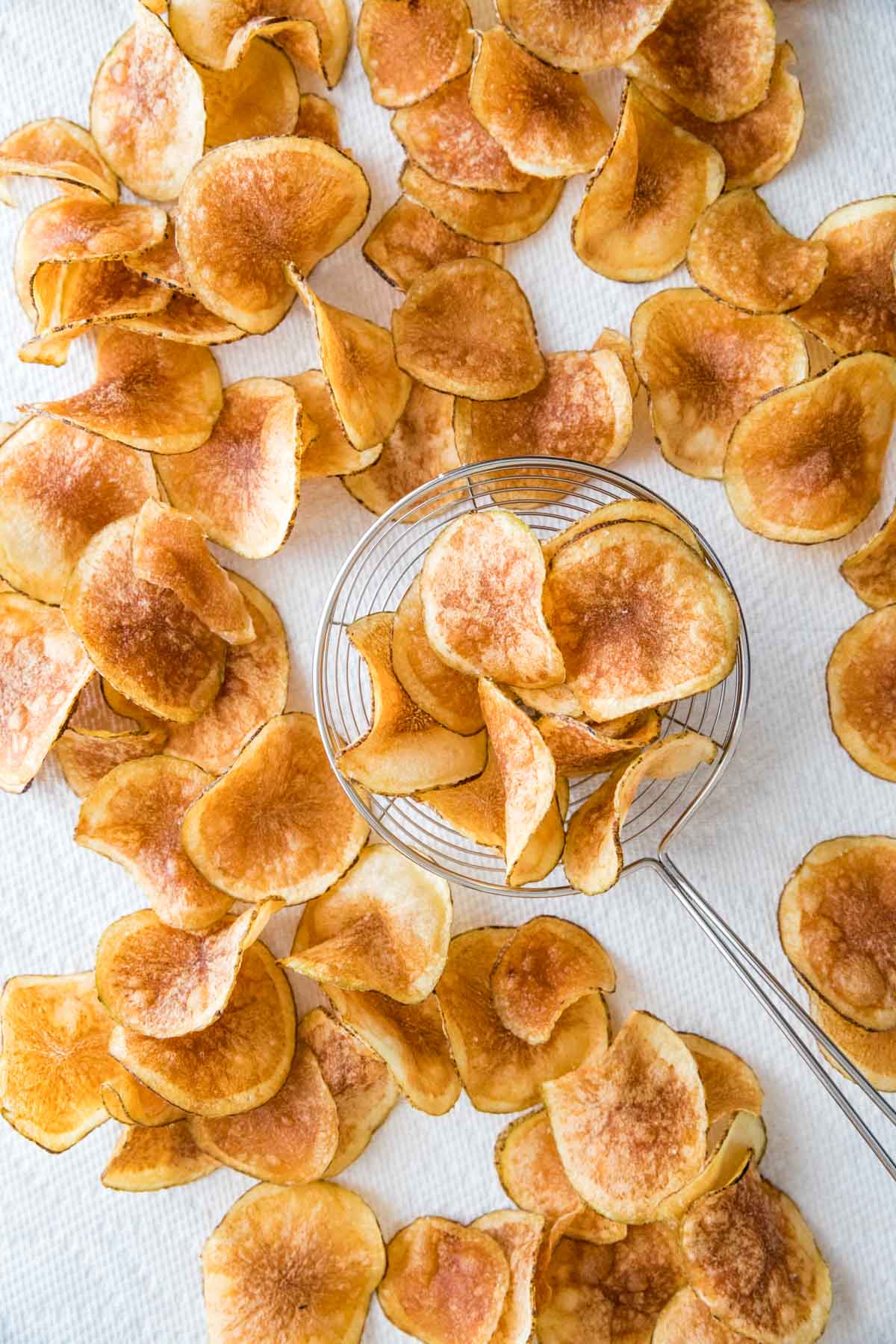
Frequently Asked Questions
Compared to regular potato chips, kettle chips are extra crunchy (and extra delicious!). This is because kettle chips are cooked in batches, while regular potato chips are cooked in a process called continuous fry. Cooking in batches causes the oil to cool down as soon as each round of chips is added, so the potatoes end up cooking longer. This results in a slightly darker, thicker, and crunchier chip.
They’re delicious just on their own, but they’d also be great dipped in dill dip, BLT dip, or ranch dressing.
They’re still potatoes fried in oil, so not really. However, you are able to better control the salt level at home, so you could say they’re a slight bit “healthier” this way…maybe? I don’t know about you, but if I’m looking for health food, I tend to steer clear of anything fried in oil 🙃
SAM’S TIP: Thin slices are SO important for a crisp kettle chip. It’s not impossible to do this by hand, but it is difficult to get the chips as thin and even as they ought to be (which is important for them to fry evenly). Because of this, I highly, highly, highly recommend a mandolin! Here is the mandolin that I use; it’s inexpensive, small (stores easily), and has many uses besides making potato chips, like prepping veggies for salads.
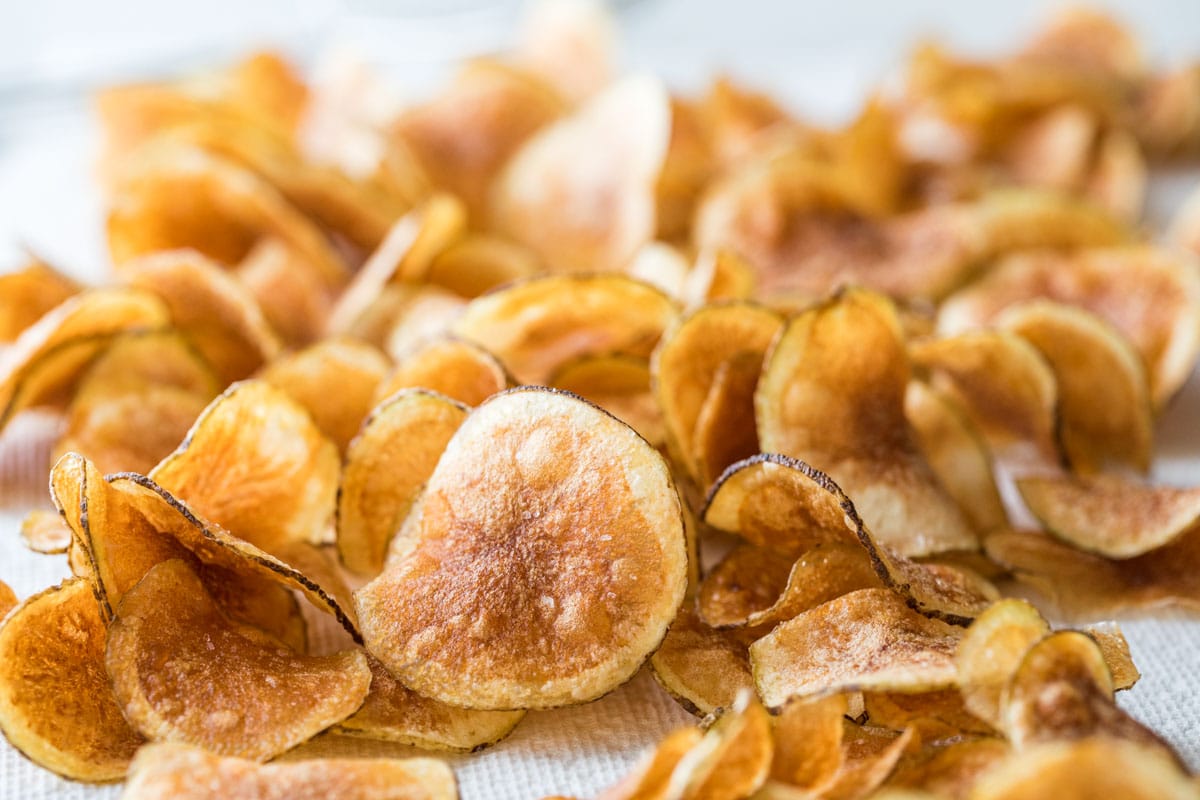
Once you taste these fresh chips, you’ll have a hard time going back to the store-bought version!
Enjoy!
Let’s bake together! I’ll be walking you through all the steps in my written recipe and video below! If you try this recipe, be sure to tag me on Instagram, and you can also find me on YouTube and Facebook
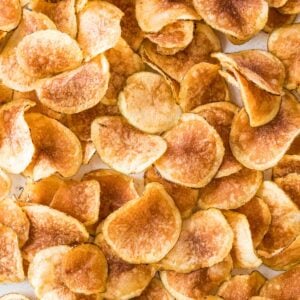
Kettle Chips
Ingredients
- 1 lb (455 g) russet potatoes unpeeled, scrubbed clean
- Sea salt for sprinkling
- Vegetable oil for frying
Recommended Equipment
- Large bowl
- Large Dutch oven
Instructions
- Slice potatoes as thin as possible, I use the thinnest setting on my mandolin, and after slicing, place in a large bowl of ice water. Let potatoes sit for 30 minutes. Once potatoes have been soaking about 15 minutes, begin to heat your oil1 lb (455 g) russet potatoes
- Pour enough oil into your pot to fill it 3” deep. Fit a thermometer to the side so that the tip of the thermometer is suspended in the middle of the oil. Place pot on stovetop over medium-low heat and bring oil to 375F (190C).Vegetable oil for frying
- Drain potatoes well and pat dry thoroughly with paper towels (residual water will bubble in the hot oil and can be hazardous, so the more you remove the better).
- (optional, but recommended for easy cleanup): Prepare a fry station beside your oil by lining a baking sheet with wax paper or paper towels and topping with a cooling rack. Keep this by your oil and transfer hot chips here.
- Working in batches, carefully lower a portion of the potatoes into the oil using spider or slotted spoon (take care to not add too many! If you do or if potatoes are very wet, the oil may bubble and overflow pot which is extremely dangerous, never touch hot oil).
- Cook the potatoes, stirring periodically to help separate them, and cook until chips are stiffened. The oil will typically stop bubbling once the potatoes are cooked through. Exactly how long this takes will vary, but is typically 4-5 minutes for me.
- Use spider to remove potato chips, drain grease back into the pot, and deposit chips evenly onto prepared frying station.
- Sprinkle with sea salt.Sea salt
- Allow oil to return to 375F (190C) before cooking the next batch of chips.
Nutrition
Nutritional information is based on third-party calculations and should be considered an estimate only. Actual nutritional content will vary based upon brands used, measuring methods, cooking method, portion sizes, and more.

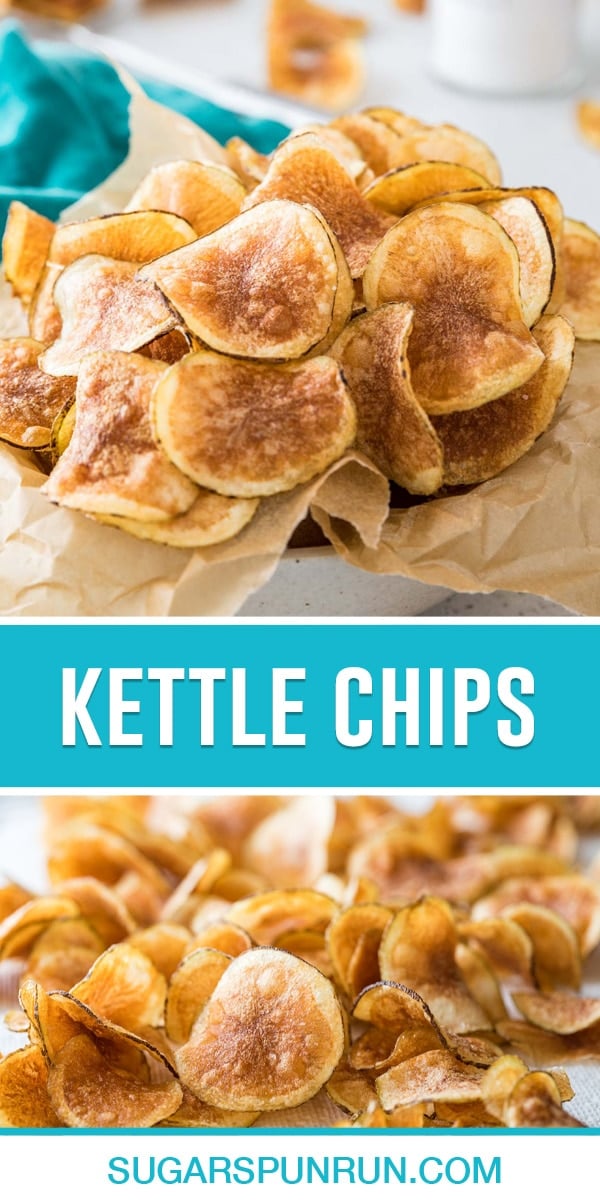
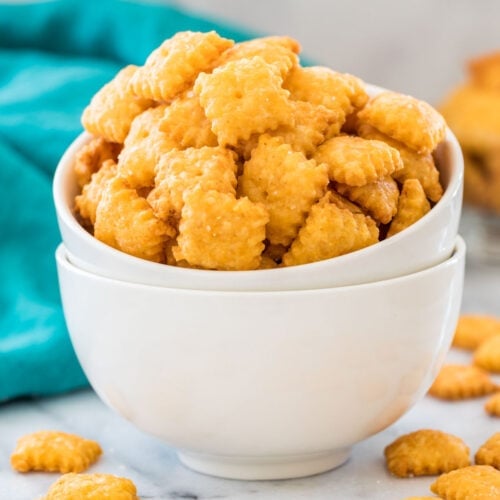
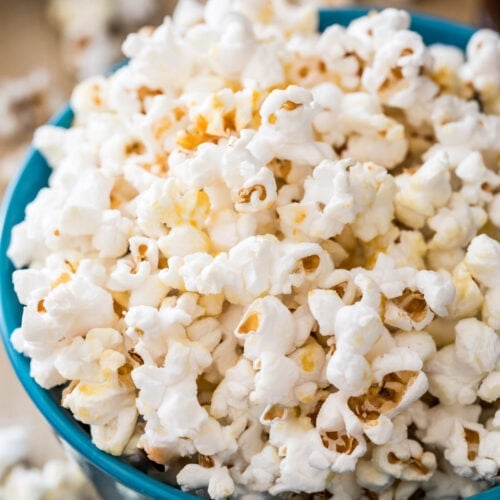
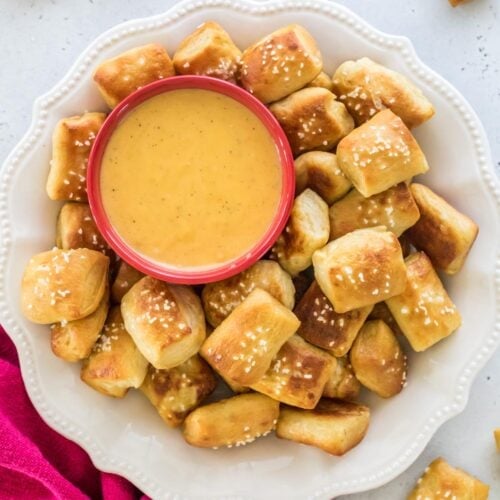
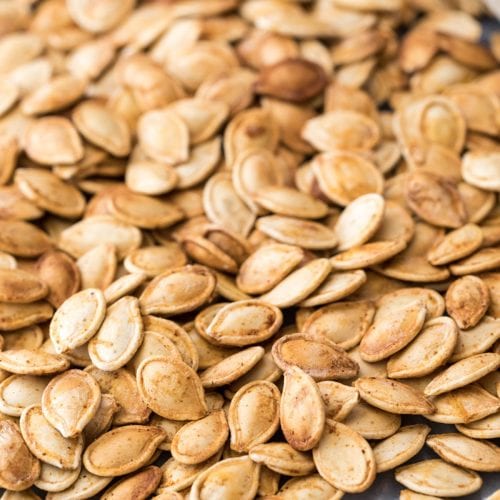
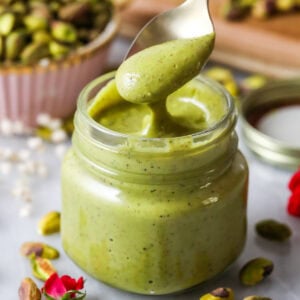
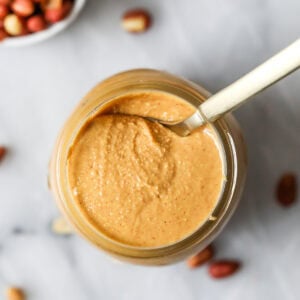

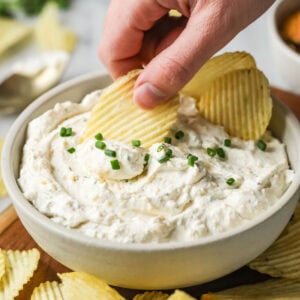
Eric in NC
Worked perfectly. What is the purpose of soaking the potato slices in cold water?
By the way, DON’T use “Vegetable Oil” (which is really seed oil) for frying – they contain mostly polyunsaturated fatty-acids that readily oxidize and are quite unhealthy. Use Avacado oil instead – mainly monounsaturated fatty acids. Notice how “vegetable oils” make a sticky, gummy residue on your fryer? Thats what happens inside your arteries as well. Avacado oil does not do that. Olive oil is equally healthy, however it is generally much more expensive, and adds its own flavor to the chips (which is great if you prefer that). If you are going to eat fried potatoes, might as well do so as healthily as possible!
Emily @ Sugar Spun Run
Hi Eric! The cold water soak helps encourage crispy kettle chips. And avocado oil is usually our preference for cooking and baking, but it can just be quite expensive, especially when you need a large quantity for frying. Totally agree though! 😊